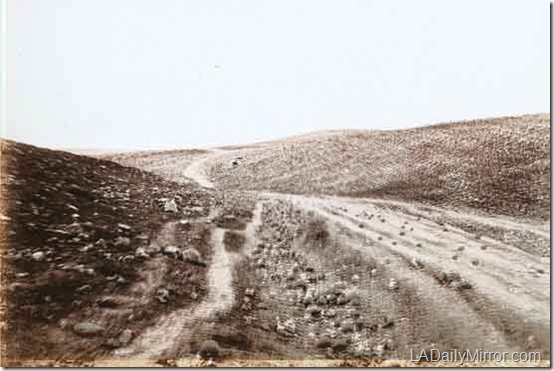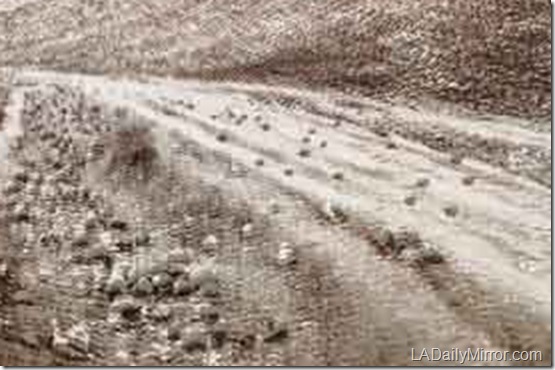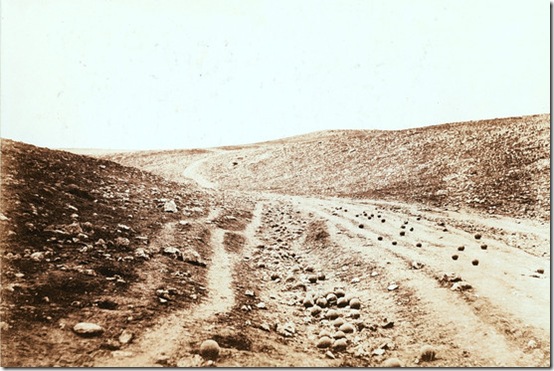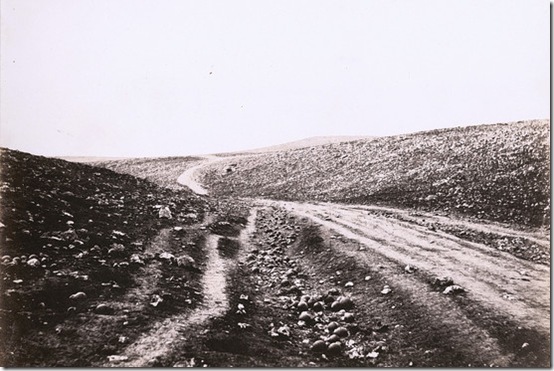I was so intrigued by Roger Fenton’s 1855 photo from the Crimean War that I thought I’d do a little experimentation.
Image: With cannonballs. Credit: Gernsheim Collection, Harry Ransom Center, The University of Texas at Austin.
Image: Without cannonballs. Credit: Gernsheim Collection, Harry Ransom Center, The University of Texas at Austin.
The obvious question (at least to me) is what happens if you combine the images?
It looks like this:

Unfortunately, I’m stuck with the low-resolution images I found on the Web. Larger scans would give better results. But notice that nothing appears to be different between the two images except for the cannonballs on the road.
Here’s a closer look.

And I have to say, based on these unfortunately murky scans and my primitive skills in combining images, that this might be one photo, not two taken in sequence. In one of them, cannonballs might have been added by an artist at some later date.
Anyone with more skill in combining photos and access to better scans, please feel free to add your opinion.




This was beat to death on some website years ago, one that I am unable to either recall or find. What follows is what I recall of the hive mind’s conclusions, with which I agree.
The consensus is that the “no cannonballs” picture is the later one, taken after troops had scavenged the servicable ones. The argument was as follows:
If Fenton had “salted” the road, where did he get the cannonballs? The area around the road shows *more* cannonballs than in the “no cannonballs” shot.
In particular, look at the large cannonball by the rock at the very bottom of the “cannonballs” picture. It’s missing in the other shot.
To believe Fenton decorated the shot you have to believe he moved a large number of heavy objects and scattered them around the whole field of view. I don’t think so.
LikeLike
I heard about this on a Radiolab story. They interviewed a man who spent years investigating this, and his reasoning for why the photo with the cannonballs on the road was the second, staged photo. It had to do with the fact that in the photo without the cannonballs, some of the rocks in the left of the picture have moved downhill. Since it would be highly unlikely for rocks to move uphill, against gravity, the photo with the cannonballs is the latter picture.
http://www.radiolab.org/2012/sep/24/in-the-valley-of-the-shadow-of-doubt/
http://www.huffingtonpost.com/2012/10/01/valley-of-the-shadow-of-death-fake_n_1928760.html
LikeLike